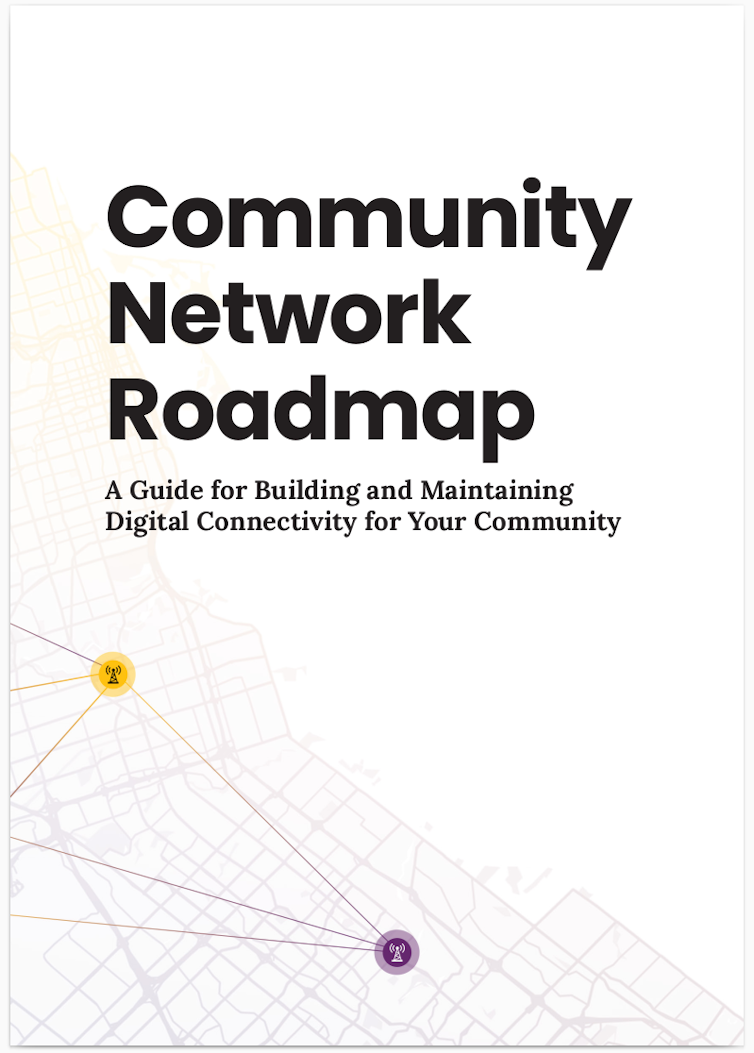According to a 2023 study by the International Telecommunications Union, approximately 2.6 billion people are unconnected to the internet. It’s a staggering figure.
There are many reasons for this, including poverty, reliability of service, access to linguistically and culturally relevant content, leisure time, access to equipment and training. But perhaps the most debilitating barrier is access to network infrastructure.
One way communities are overcoming network access barriers is by creating networks themselves. A digital network built and operated by the people who use it is a collective response to what is often a systemic problem. Communities are building and operating their own broadband networks all over the world.
Developing network literacy
One of the key challenges that arises when people want to build their own broadband network is ensuring community members have the knowledge and skills required to address the complexities involved. Many different kinds of information have to be assembled and strategically navigated.
This is the problem we set out to solve with the Community Network Roadmap.
We came together as a small team of engineers, social scientists and designers to create a document that helps non-experts design, create and sustain a community-run broadband network. The elements of a network need to not only be built and installed, but also maintained, repaired and replaced over time. These elements include both technical and social infrastructure such as key personnel and community relationships.
Building and maintenance
The Roadmap is based on research evaluating success strategies of community networks in Argentina and Mexico. Members of the team also had experience building networks in North America and working with community network builders from around the world. In the Roadmap, we wanted to emphasize two strategic priorities: building and maintaining.
Building encompasses the urgency and complexity of getting a network off the ground, while maintaining considers planning for long-term network sustainability.
We designed the Roadmap using visual strategies for clarity — for example, we strategically differentiated the layout with colour coding, using yellow for “Build” and purple for “Maintain.” This design approach improves understanding and also anticipates future challenges related to both the inception and maintenance phases of the community network’s lifecycle.

Inclusive information design
Information design can organize complex information in more accessible and inclusive ways. We organized the content structurally and visually to provide a clear, accessible, easy-to-navigate and usable document for as broad an audience as possible.
The Roadmap emphasizes community efforts aimed at inclusion, accountability, group decision-making and long-term planning. And it also presents the technical steps and stages required for building a network in an accessible way — including local needs assessments, network mapping, equipment choices and deploying a pilot network.
The publication structure, guided by principles of information design, breaks up complex blocks of information into manageable chunks using accessible design features such as cross-referencing and signposting strategies. The Roadmap is a quick and ready resource for learning and training.
Harnessing community knowledge
Another key strategy identified in the Roadmap is how to pool technical knowledge among community members tackling a network project. The Roadmap lays out strategies for documenting and sharing troubleshooting and problem-solving resources, so that emerging community network wisdom does not get lost.
Community networks in different contexts will present unique opportunities and challenges. In creating this tool we drew on research and experience collaborating with community networks in rural Mexico and Argentina, the Philippines, and First Nations and Indigenous groups in Canada and the United States.
Our hope is that the Roadmap will provide both short and long-term considerations that a wide range of communities will find helpful in their own efforts to overcome connectivity barriers.
Read more: Broadband is the key infrastructure for the 21st century
Planning and maintaining networks
The Community Network Roadmap is designed for communities in both the early stages of considering a community network, as well as for those who already have a network and require resources for troubleshooting and maintenance.
For communities in early stages of thinking about a community network, the Roadmap offers thorough and research-based explanations of the many different issues, dimensions and considerations that can arise in the process of building and sustaining a community-run broadband network. For example, community relationships and accountable decision-making processes are as important to consider as network maps and equipment choices.
In addition, communities starting a network often overlook longer-term issues like succession planning, network expansion, equipment upgrades and changing local needs. Bringing in medium and long-term considerations at the outset can make growth and change easier to manage.
The Roadmap can also be used as a resource for troubleshooting specific problems.
A global community resource
The Roadmap is designed with a DIY method in mind — it is a document that we hope will help communities achieve connectivity goals using resources they have available. Feedback from communities will help us update and adapt it to better reflect the needs of those who use it.
Connectivity today plays a central role in allowing individuals and communities to fully realize citizenship and belonging. How we navigate everyday life and participate politically and socially, and how we access educational opportunities all now manifest, at least in part, through digital networks.
To be excluded from digital communication is often paramount to be being excluded from society. When communities are able to build and maintain broadband networks in accessible and reliable ways, they are afforded all of the opportunities and advantages of digital communication.
Shraddha Kumbhar contributed to the writing of this article; she was the lead information designer for the Roadmap and is a graduate from Emily Carr University’s Master of Design program.

